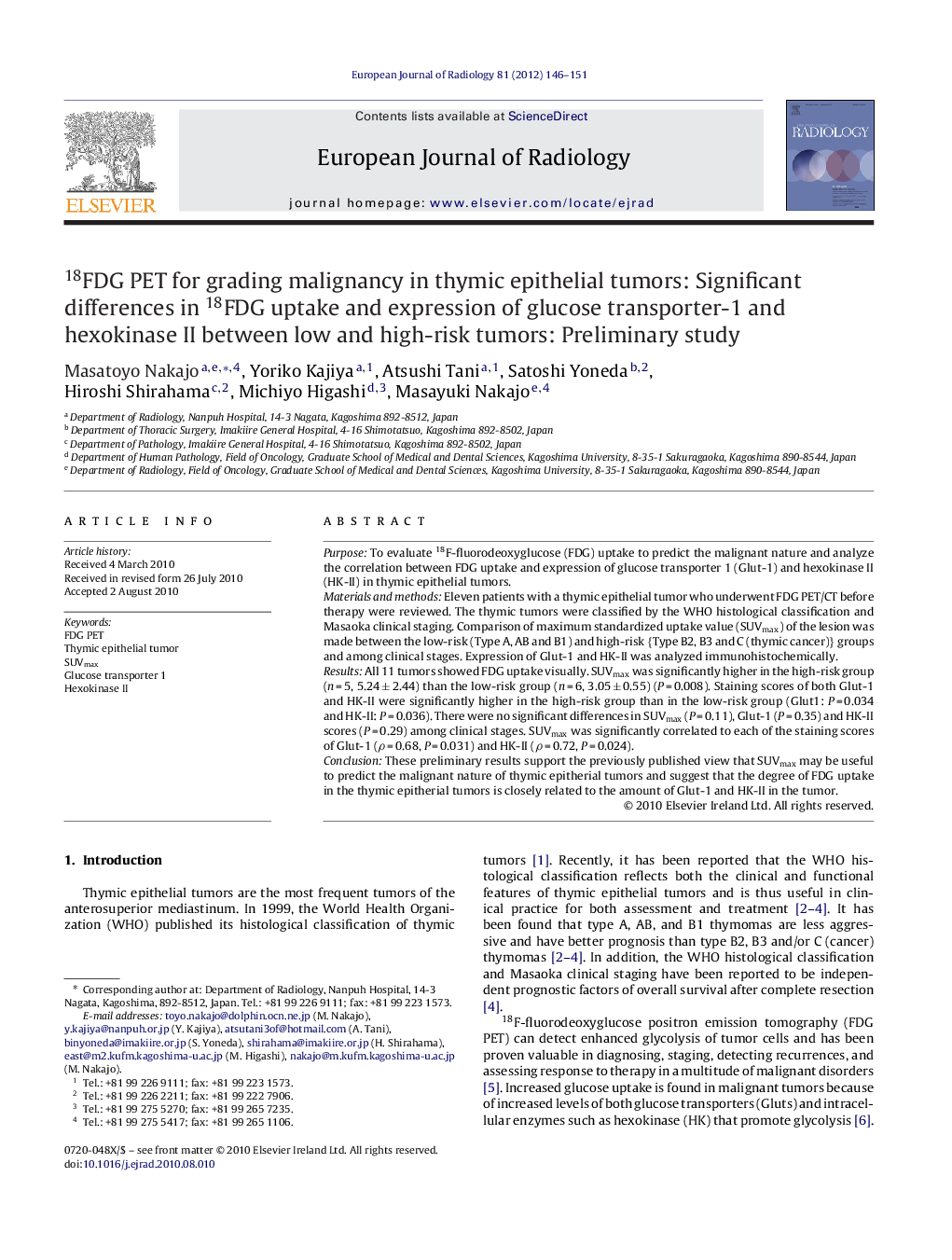| Article ID | Journal | Published Year | Pages | File Type |
|---|---|---|---|---|
| 4226284 | European Journal of Radiology | 2012 | 6 Pages |
PurposeTo evaluate 18F-fluorodeoxyglucose (FDG) uptake to predict the malignant nature and analyze the correlation between FDG uptake and expression of glucose transporter 1 (Glut-1) and hexokinase II (HK-II) in thymic epithelial tumors.Materials and methodsEleven patients with a thymic epithelial tumor who underwent FDG PET/CT before therapy were reviewed. The thymic tumors were classified by the WHO histological classification and Masaoka clinical staging. Comparison of maximum standardized uptake value (SUVmax) of the lesion was made between the low-risk (Type A, AB and B1) and high-risk {Type B2, B3 and C (thymic cancer)} groups and among clinical stages. Expression of Glut-1 and HK-II was analyzed immunohistochemically.ResultsAll 11 tumors showed FDG uptake visually. SUVmax was significantly higher in the high-risk group (n = 5, 5.24 ± 2.44) than the low-risk group (n = 6, 3.05 ± 0.55) (P = 0.008). Staining scores of both Glut-1 and HK-II were significantly higher in the high-risk group than in the low-risk group (Glut1: P = 0.034 and HK-II: P = 0.036). There were no significant differences in SUVmax (P = 0.11), Glut-1 (P = 0.35) and HK-II scores (P = 0.29) among clinical stages. SUVmax was significantly correlated to each of the staining scores of Glut-1 (ρ = 0.68, P = 0.031) and HK-II (ρ = 0.72, P = 0.024).ConclusionThese preliminary results support the previously published view that SUVmax may be useful to predict the malignant nature of thymic epitherial tumors and suggest that the degree of FDG uptake in the thymic epitherial tumors is closely related to the amount of Glut-1 and HK-II in the tumor.
